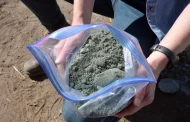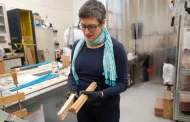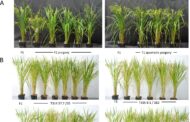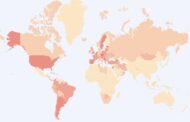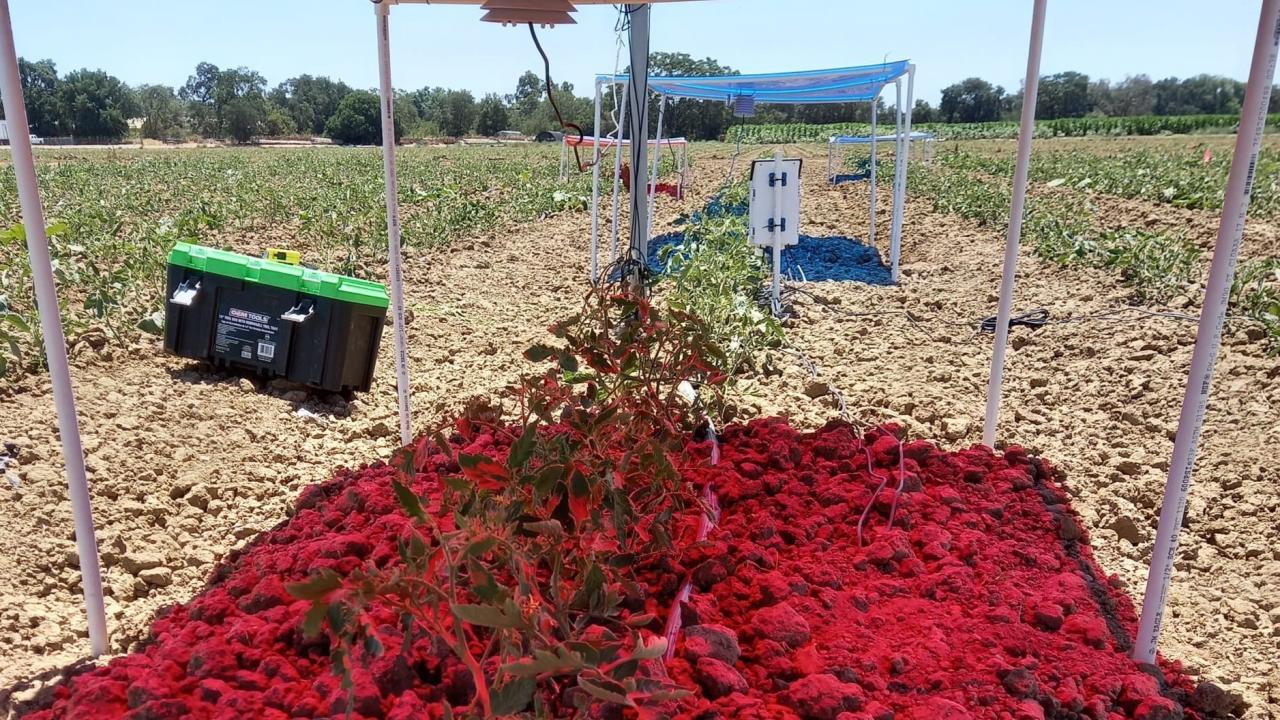
Solar filters emit a red light over tomato plants growing in a research field at UC Davis in 2022. The work further tests the findings of a UC Davis study showing plants in agrivoltaic systems respond best to the red spectrum of light while blue light is better used for energy production.
Andre Daccache/UC Davis)
Different Light Spectra Serve Different Needs for Agrivoltaics
People are increasingly trying to grow both food and clean energy on the same land to help meet the challenges of climate change, drought and a growing global population that just topped 8 billion. This effort includes agrivoltaics, in which crops are grown under the shade of solar panels, ideally with less water.
Now scientists from the University of California, Davis, are investigating how to better harvest the sun — and its optimal light spectrum — to make agrivoltaic systems more efficient in arid agricultural regions like California.
Their study, published in Earth’s Future, a journal of the American Geophysical Union, found that the red part of the light spectrum is more efficient for growing plants, while the blue part of the spectrum is better used for solar production.
A door opener
The study’s results could help guide global interest in agrivoltaics and identify potential applications for those systems.
“This paper is a door opener for all sorts of technological advancements,” said corresponding author Majdi Abou Najm, an associate professor at the Department of Land, Air and Water Resources and a fellow at the UC Davis Institute of the Environment. He conducted the study with first author Matteo Camporese of the University of Padova in Italy, who came to UC Davis as a Fulbright visiting scholar. “Today’s solar panels take all the light and try to make the best of it. But what if a new generation of photovoltaics could take the blue light for clean energy and pass the red light onto the crops, where it is most efficient for photosynthesis?”
For the study, the scientists developed a photosynthesis and transpiration model to account for different light spectra. The model reproduced the response of various plants, including lettuce, basil and strawberry, to different light spectra in controlled lab conditions. A sensitivity analysis suggested the blue part of the spectrum is best filtered out to produce solar energy while the red spectrum can be optimized to grow food.
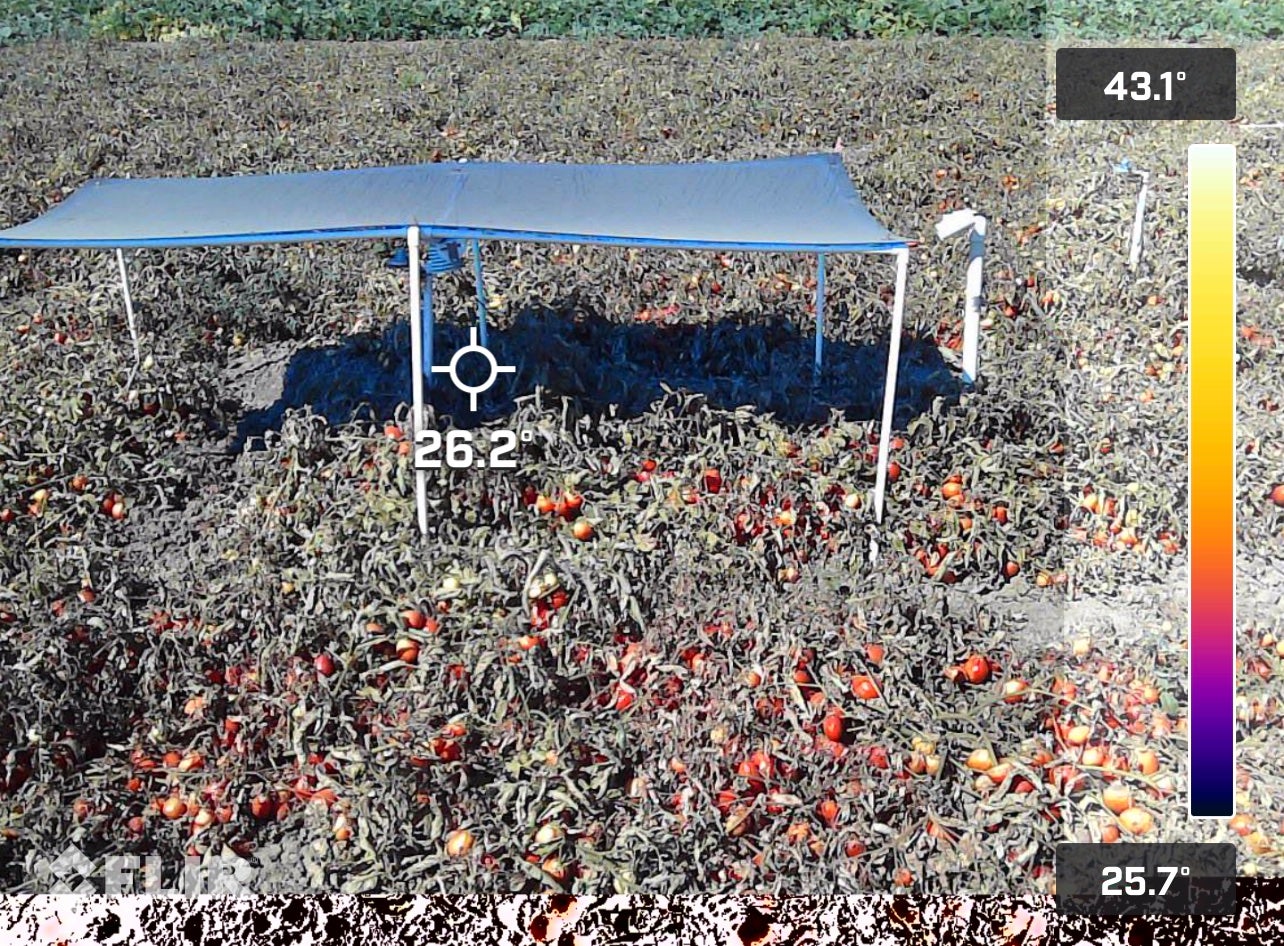
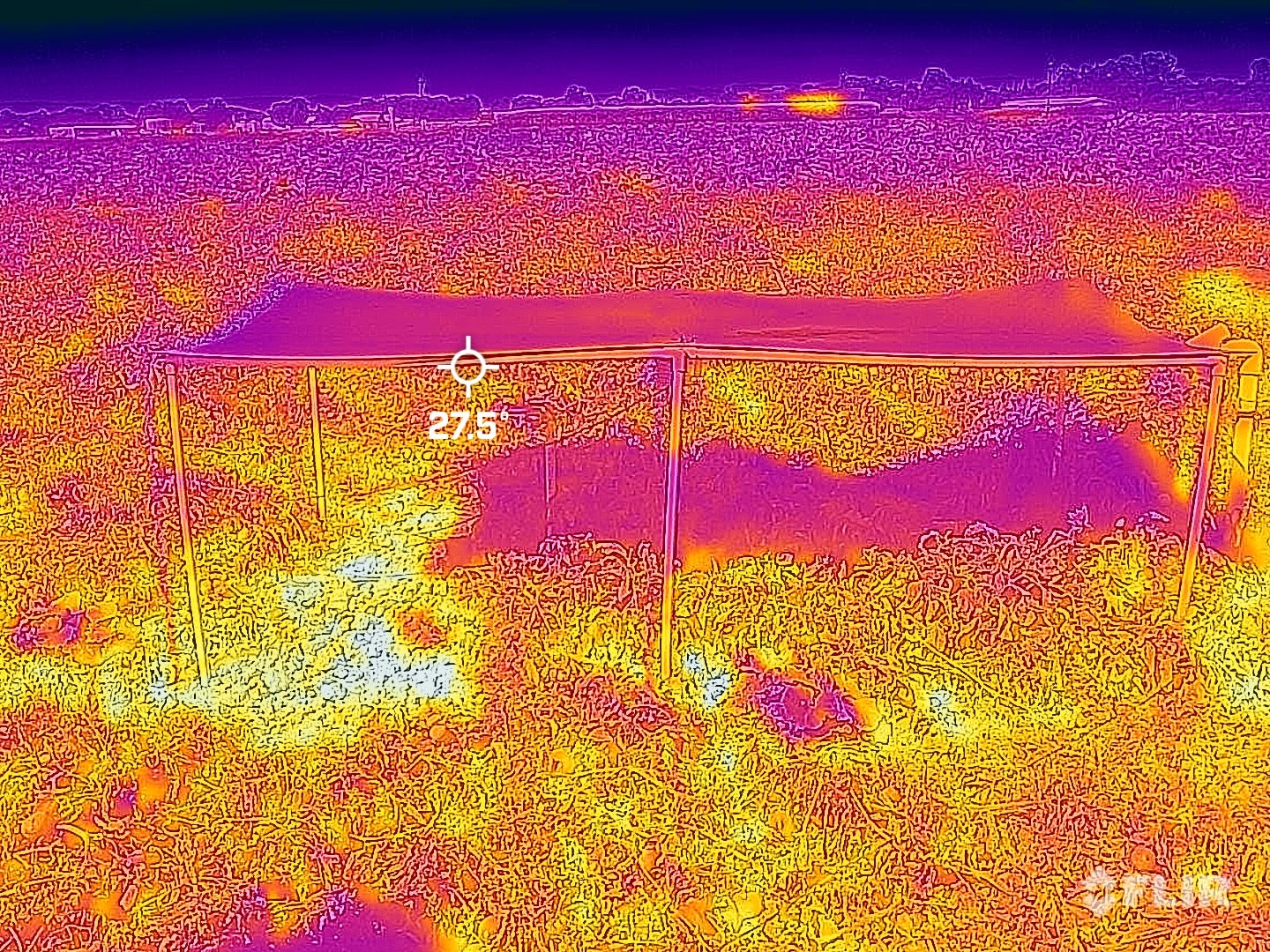
This work was further tested this past summer on tomato plants at UC Davis agricultural research fields in collaboration with UC Davis Assistant Professor Andre Daccache from the Department of Biological and Agricultural Engineering.
Guiding light
In an era of shrinking viable land, understanding how plants respond to different light spectra is a key step toward designing systems that balance sustainable land management with water use and food production, the study noted.
“We cannot feed 2 billion more people in 30 years by being just a little more water-efficient and continuing as we do,” Abou Najm said. “We need something transformative, not incremental. If we treat the sun as a resource, we can work with shade and generate electricity while producing crops underneath. Kilowatt hours become a secondary crop you can harvest.”
Original Article: Harvesting Light to Grow Food and Clean Energy Together
More from: University of California Davis | University of Padova
The Latest Updates from Bing News
Go deeper with Bing News on:
Agrivoltaics
- Solar panels may prevent crop loss and regenerate clean energy
According to Derek Whitelock, agricultural engineer at the USDA ARS Cotton Ginning Research Laboratory in Las Cruces, NM, the United States needs more solar panels to produce renewable energy. Since a ...
- Enerside sells Italy agriPV and BESS project to Chint Solar
Enerside Energy has sold a project combining agrivoltaics (agriPV) and a battery energy storage system (BESS) in Italy to Chint Solar.
- Douglas County leaders briefed on revised wind rules ahead of key vote next week
Notably, the Kansas Sky Energy Center project was approved while missing completed plans for stormwater management and agrivoltaics, the simultaneous use of land for solar energy generation and ...
- Agrivoltaics: Weighing solar growth and farmland loss
Rural community resistance to solar development is expressed at the focal point of county zoning approval, with citizen testimony raising concerns over negative environmental and property value ...
- This Tribe Will Gladly Accept Clean Energy Funding, Even If Wyoming Won’t
When Wyoming governor Mark Gordon told the Environmental Protection Agency in 2023 that the state would not be applying for federal grant money to reduce pollution and greenhouse gases, he left most ...
Go deeper with Bing News on:
Agrivoltaic systems
- Renewable Agriculture and Food Systems
This journal utilises an Online Peer Review Service (OPRS) for submissions. By clicking "Continue" you will be taken to our partner site https://www.editorialmanager ...
- ENERSIDE Sells Italian Agri-Solar PV And BESS Combo To Chint Solar
ENERSIDE today announced the sale of 360 MWp agrivoltaic solar project with an integrated battery energy storage system (BESS) of 82.5 MWh in Sardina, Italy. The acquirer is Chint Solar Europe (“Chint ...
- Generac Power Systems Reviews
Generators for business: Generac offers businesses with multiple standby power solutions including gas- and diesel-fueled, bi-fuel and modular power systems. Its single generators offer up to two ...
- Best Medical Alert Systems Of 2024
Medical alert systems connect users to a dispatcher who can send for assistance in the event of a medical emergency. Some systems are designed for in-home use while others offer security on the go ...
- Best Mobile Medical Alert Systems Of 2024
Mobile medical alert systems use cellular and/or GPS technology to provide users with 24/7 connectivity to an emergency call center from any location. Mobile medical alert devices come in various ...



